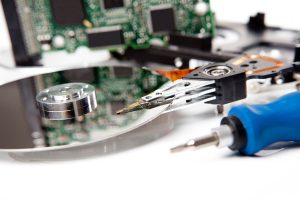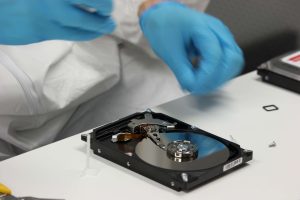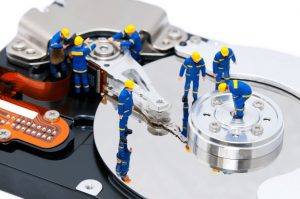Data Recovery How To SSD Best Data Loss Happens
3 min read
Solid state drives are an alternative storage media from the original disk drive. It does not have the disks or moving parts, and like the flash drives data Recovery is stored in memory chips containing flash cells. Solid state drives are less susceptible to mechanical damage. The memory chips are made up of integrated circuits that keep the data in the form of electric charge. This introduces an avenue of Data Recovery loss by leakage, which happens over time when there is no external power source.
Due to the small size of the memory chips, solid state drives are more compact and are more popular for smaller devices. The memory can be accessed quickly and easily. The shortfall is they have a limited number of write and overwrite cycles per circuit; this limits the storage they can offer and makes them far more expensive.
The reality is Data stored can be lost. Data loss is a big problem, especially for a data-intensive institution like financial institutions. Losing any data can result in loss of business and company records. The process of recovering lost information takes time and finances which would have otherwise been dedicated to different areas.
Causes of SSD data Recovery loss: how it happens :
Though the mechanical damage is less likely to cause SSD data Recovery loss, there are other ways data can be lost. Data loss can occur at the flash cell degradation. Information stored through electrons found in the floating gate. They alter the memory cell’s polarity and wikipedia data is stored. The degradation is caused by normal write, overwrite and cutting processes. A layer of oxide in the NAND cell deteriorates and thus reduces the capacity of the cell to store charge. The more the processes carried out, the more the cell becomes less reliable in storing data.

Bad or damaged data Recovery capacitors and circuit boards :
The SSD can lose data due to the failure of one or more electronic components. The SSD relies heavily on electric parts to work. If the power is not properly transmitted to the required areas then data Recovery may be corrupted or lost. For example capacitors in the drive may be unable to transmit current due to a power surge or the capacitors used were faulty or when the circuit boards are damaged. The chips that determine which cell is accessed for which information may fail, thus, making data inaccessible or corrupt.
Improper handling :
During installation or troubleshooting, handling the equipment without insulating material can send static charges to the drive. As a result, some parts may fail. Exposure to liquids or moisture may lead to short-circuiting, hence, data loss.
Firmware updates or corruption :
Firmware may also fail and lead to data Recovery loss. The failure may result from firmware updates that may corrupt the firmware. The firmware is a small set of instructions in the microprocessor which is found in the controller. It communicates with the machine to receive instructions and controls retrieval of stored data Recovery and writing new sections. SSD failure can also result from computer virus attacks. Files may be deleted or rendered unusable. Viruses may also corrupt software leading to data loss.


